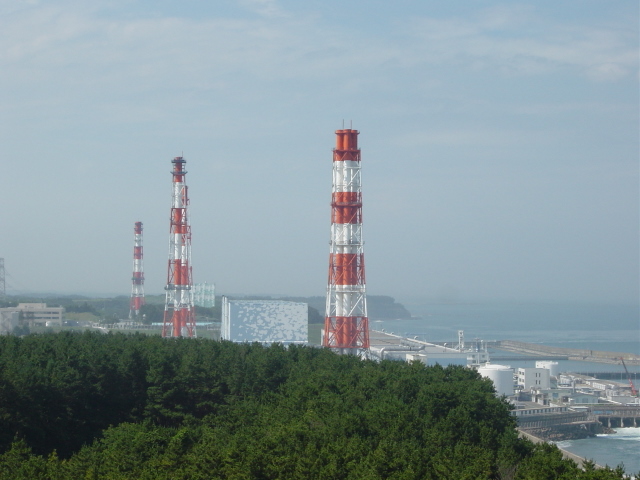The earthquake off the coast of Japan this year caused damage to the nuclear power plant in the city of Fukushima, and the release of radioactive material into the environment that necessitated the evacuation of residents. What is the situation today and how will it end?

Roy Shani Galileo
On March 11 of this year, an earthquake with a magnitude of 9.0 occurred off the coast of Japan. The earthquake caused tsunami waves 10 meters high, which washed over the coastal strip of the northeastern part of the country. The earthquake caused heavy damage to infrastructure, including the nuclear power plant in Fukushima, located 250 km north of Tokyo.
After some of the reactor buildings cracked with noise, the tsunami waves led to a sudden power outage that caused the reactors' cooling mechanism to collapse. As a result, the authorities declared a state of emergency and evacuated the residents living within a radius of 20 kilometers from the nuclear power plant.
The next day there was an explosion in one of the buildings and two days later another explosion in a nearby reactor. We note that these are not nuclear explosions of the fissile material in the reactor, but conventional explosions that caused the release of radioactive material into the environment. At the same time, water contaminated with radioactive materials leaked into the sea. Volatile radioactive substances may be released into the air, while radioactive substances that dissolve in water will endanger the water reservoirs and the soil.
The risk: radioactive radiation
In view of the media hesitancy and the inconsistency in the Japanese government's publications, the "Greenpeace" organization sent an international team of experts to the disaster area to estimate its dimensions. The expedition's findings are more serious than the official publications; It turned out that the radiation levels measured in the area near the explosion were very high.
From the findings of the expedition, it emerged that the evacuation radius of the residents should be doubled, this after the team measured radiation at a dangerous level in a small village called Itata, which is 40 km away from the miners themselves. After the findings were published, the villagers decided to take action and evicted all the pregnant women and children up to the age of 3 on their own initiative.
Radioactive radiation is ionizing radiation that changes the structure of the living cell. These changes may cause genetic mutations, birth defects, various types of cancer, loss of fertility as well as severe immune, cardiovascular and hormonal disorders. In cases of exposure to high levels of radiation, death is immediate or within a few hours. Fetuses and children are in a special risk group due to the fear of the culture of the damaged cells and their proliferation.
The risks from radiation arise both from direct exposure to it and from eating, drinking and breathing radioactive substances. Also, when there is environmental pollution, there is a fear of radioactive substances entering the food chain as well. This concern was adjusted when reports began to be received of vegetables, fruits, meat products and seafood reaching the local markets and they discovered that they were contaminated with radiation, that the tap water in Tokyo was also contaminated and that the radioactive spot had invaded 15 km deep into the sea: this means serious damage to fishing and agriculture the marine
The end? It's too early to tell
The nuclear crisis in Fukushima has not yet ended, so the magnitude of the disaster and its consequences are still unknown. Experts estimate that so far between 20-10 percent of the total radioactive material leaked from the Chernobyl disaster has leaked from the reactors.
Some of the leaked materials, such as the isotope cesium-137, remain radioactive for decades (the half-life of cesium-137 is about 30 years). Despite the success of the Japanese in stabilizing most of the reactor cores, there is still a fear of the collapse of the reactor cores - which will lead to the release of all the radioactive material in them into the environment and deep and severe pollution.
The news was written with the assistance of Greenpeace Israel
** The editors thank Dr. Aryeh Melamed-Katz for his help
The full article was published in Galileo magazine, May 2011

5 תגובות
sympathetic
Tsunamis are not under our control. Nuclear miners are our responsibility.
Either one of the reactors would have ruptured or all six reactors would have ruptured/collapsed. The disaster would have been worldwide.
And there is still a danger of disaster from these miners, and we still don't really know the dimensions of the disaster.
The question is what will happen to humanity if nuclear reactors are damaged by natural disasters that are getting stronger and stronger.
I'm interested in whether an oil/fuel/diesel power plant would have been hit by a tsunami, whether the damage to humans and the ecology would have been less than a nuclear power plant. (if the power is equal, of course)
Does anyone have a way to measure this?
Luke
The miners are disabled. If residents were evacuated from the area, who would agree to operate the reactors where the radiation level is higher?
The above article is purely public intimidation. How many people were killed in the tsunami? Thousands and how many were killed in the first? As far as I know, there is not one person killed by radioactive radiation. In comparison to the panic surrounding the reactors in Japan, look at the number of people who died from germs in Germany (which chose to close its reactors) in the last year.
The fact that although a tsunami hit the coast of Japan and created tremendous destruction and caused mass killings and on the other hand the miners survived and not a single person was fatally injured (I also believe that there was no long-term harm to the residents) is another validation for the safety of nuclear energy in relation to the public.
Are the miners currently working or disabled?